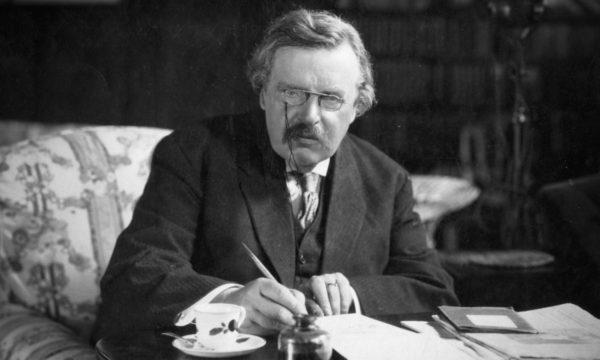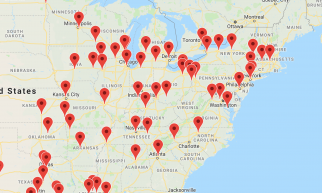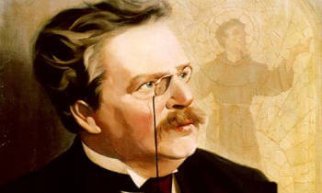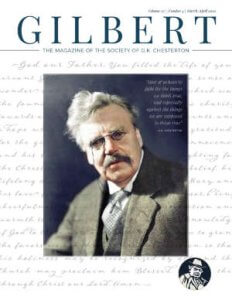When Chesterton was going to write his first novel, he had 10 shillings in his pocket. He went to Fleet Street, got a shave, ordered a large lunch for himself including a bottle of wine, and then, broke but “fortified,” went to his publisher, outlined the book he had in mind, and asked for an advance of 20 pounds. The publisher liked it and said he would send the money the following week.”If you want the book,” said Chesterton, “you will have to give it me today as I am disappearing to write it.” He got the money (which he promptly gave to his wife).
The book was The Napoleon of Notting Hill. It was written in 1904. The action of the story takes place 80 years into the future, or 1984. Ironically, some two decades after this book was written, Chesterton gave a break to a young writer by publishing his first essay in G.K.’s Weekly. The writer was Eric Blair, who, under his pen name of George Orwell, would also write a futuristic novel which takes place in. . . 1984. Chesterton’s book is not meant to be futuristic or prophetic, he simply needed a setting removed from his own day, but not from his own neighborhood. His most accurate prediction is about what would not happen. People would not change. Democracy would still be a challenge that most people would not face up to. The most capable people would refuse to take the responsibility of governing, and most people in general would regard government not so much with resentment as with indifference.
In the book, the new king, Auberon Quin, who is appointed by lottery, takes everything as a joke, including his own kingship. He decrees the reinstatement of medieval heraldry and requires every neighborhood in London to fly its own colors. The commercial interests go along with the king’s charade so long as it doesn’t affect their bottom line, and so long they can profitably find their way to circumvent silly ideas of local patriotism. But they run into a problem when the leader of one borough takes the King’s decrees quite seriously. Adam Wayne carries the colors of his neighborhood, Notting Hill. The others are perfectly willing to let the young idealist strut around with his sword. But soon there’s a problem. They want to build a highway through Notting Hill. Adam Wayne will not allow it. Defending his colors means defending his neighborhood. Suddenly his sword is no longer a decoration, as he rallies the local residents to form an army and join him.
A number of surreal battles follow in which Adam Wayne, against all odds, somehow prevails. (His amazing strength and resourcefulness has led David Doll to suggest that Adam Wayne is a cousin to Bruce Wayne.) The battles are exciting, but the blood doesn’t seem real, because even real blood doesn’t seem real. It is concealed like so many of our secrets. However, the odd characters do seem real because even real people are preposterous. They are a shock of delight.
At the climax of one battle, the King — who takes nothing seriously — finds himself joining forces with Wayne — who takes everything seriously. Auberon Quin and Adam Wayne ultimately realize that they represent the two lobes of the brain, the brain of the ploughman. It is the common man who knows how to fight and how to love, how to laugh and how to die. This is sanity. You cannot have laughter without love; you cannot have love without laughter. As we stand with the two men in the breaking morning light at the conclusion of this novel, as we contemplate with them this sudden truth that satire is fruitless without faith, and faith is flavorless without satire, something else startles us. Chesterton has not given us even one female character in this book. Not one. But in spite of that, he has revealed why mothers laugh at their children, lovers at their lovers, and wives at their husbands.





